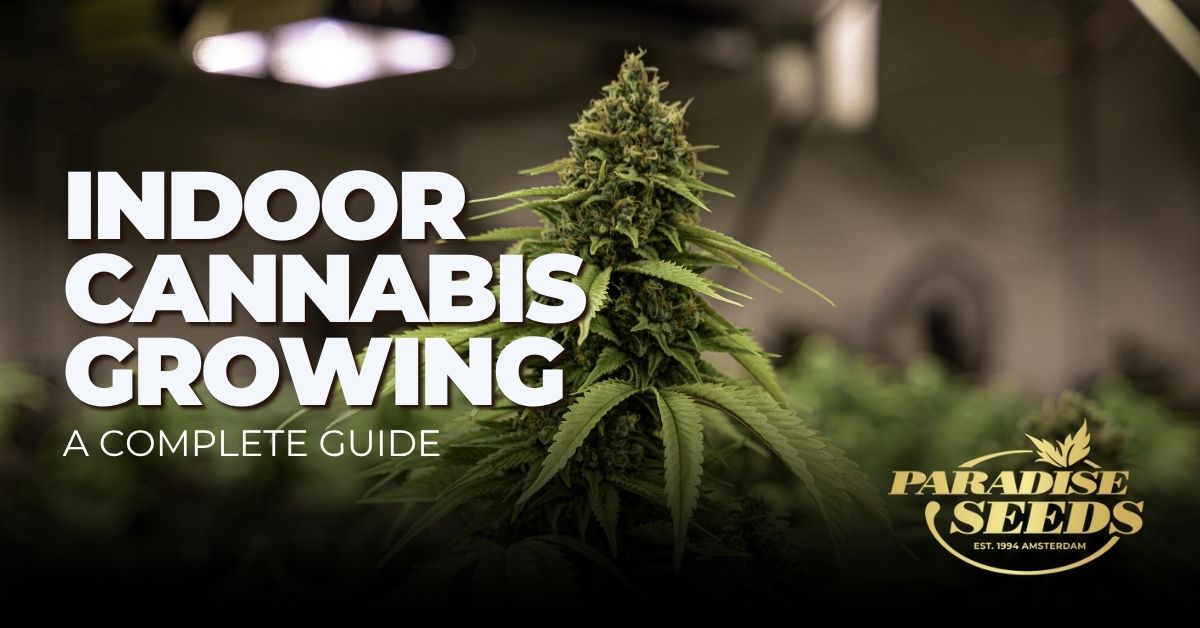Indoor cannabis growing offers unparalleled control over environmental factors, leading to consistent quality and yield regardless of external weather conditions.
This guide is tailored for the novice home grower, providing essential information and step-by-step advice to help you establish a successful indoor cannabis cultivation.
Contents
Why grow cannabis indoors?
Indoor cannabis growing provides numerous benefits that outdoor growing cannot match. You become the master of your plants’ environment, allowing for:
- Precision Control: Every aspect, from light cycles and temperature to humidity and nutrient delivery, can be meticulously managed. This precision translates into optimized growth and higher quality buds.
- Multiple Harvests: Unlike outdoor growing which is limited by seasons, indoor setups allow for continuous cycles, meaning you can achieve multiple harvests throughout the year.
- Pest and Disease Management: A controlled indoor environment significantly reduces the risk of pests and diseases that are prevalent in outdoor settings.
- Discretion and Security: Indoor grows are inherently more private and secure, which is a crucial consideration for home growers.
- Strain Versatility: You’re not restricted by the local climate. You can cultivate a wider variety of cannabis strains, including those that might not thrive outdoors in your region.
While indoor growing requires an initial investment in equipment and a deeper understanding of environmental control, the rewards of high-quality, consistent harvests make it a highly fulfilling endeavor for home growers.
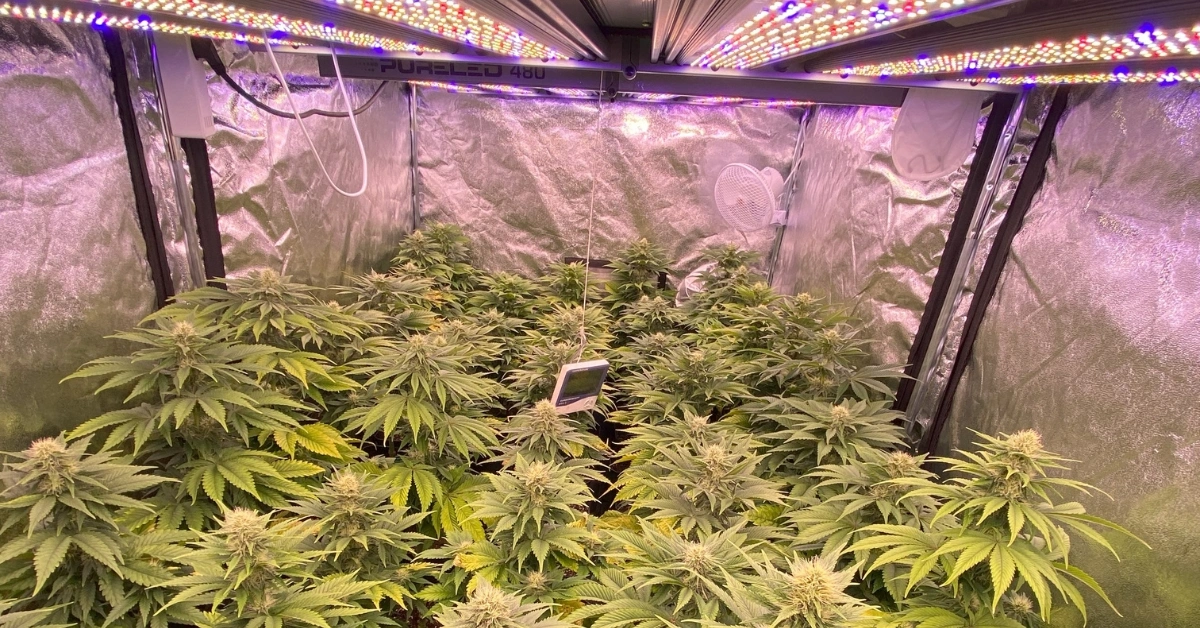
Choosing the right seeds for growing cannabis indoors
All beginners who are new to indoor cannabis cultivation should take the time to carefully read the descriptions of the cannabis seeds they plan to purchase.
While there are plenty of strains which are good all-rounders for indoor cannabis growing, every grow space is different and you want to customize your strain choice to maximize the potential of your grow room. Unless mentioned, the following descriptions refer to photoperiod plants (see this article for the difference between photoperiod and autoflower varieties)
For example:
- Indica cannabis seeds are harvested earlier and will grow shorter, but their growth pattern will be more bushy.
- Sativa cannabis seeds produce plants which have a longer flowering time and typically tend to stretch more during the flowering stage, so sativa strains should be avoided if height is an issue in your grow space.
- Hybrid cannabis seeds are sometimes the best choice as they combine indica and sativa qualities.
- Autoflower cannabis seeds are good option for fast turnaround, because of their super quick flowering time.
- If you are new to cannabis growing, we recommend start reading our guide on how to germinate cannabis seeds.
Essential Equipment for Indoor Cannabis Growing
Setting up an indoor grow room requires thoughtful selection of equipment to mimic and optimize the natural conditions cannabis plants thrive in. Here’s a breakdown of the necessities:
Construct your grow space!
Your grow space is the foundation of your indoor operation. It needs to be clean and allow for proper ventilation.
- Grow Tents: These are highly recommended for beginners. They are relatively cheap, easy to set up, reflective on the inside to maximize light efficiency, and come with ports for ventilation systems. They are available in various sizes to suit your needs, from small cabinets to walk-in tents.
- Dedicated Grow Room: For larger operations, a spare room or closet can be converted for indoor cannabis growing. This requires more effort in ensuring the space is sealed to prevent light leaks and providing proper ventilation and air circulation.
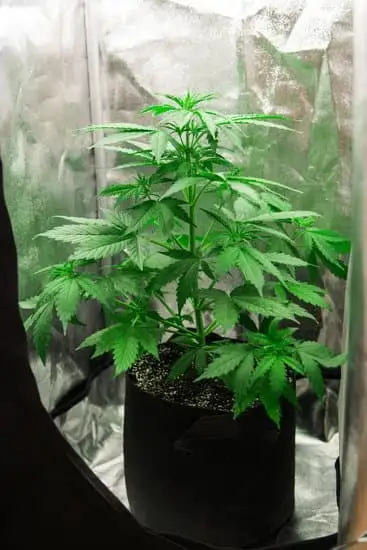
Different lighting systems for indoor cannabis
Lighting is arguably the most critical component for indoor cannabis growing, as it replaces natural sunlight. Cannabis plants require different light spectrums and intensities during their vegetative and flowering stages.
- LED Grow Lights: These are highly efficient, produce less heat, have a long lifespan, and offer a full spectrum of light, making them suitable for all stages of growth. While the initial cost can be higher, their energy efficiency makes them cost-effective in the long run.
- HID (High-Intensity Discharge) Lights: This category includes Metal Halide (MH) for vegetative growth (blue spectrum) and High-Pressure Sodium (HPS) for flowering (red/orange spectrum). They are powerful but generate significant heat, requiring robust ventilation.
- Fluorescent Lights (T5, CFL): Less powerful and suitable for seedlings, clones, or small grows, these are often used for the early stages before transitioning to stronger lights.
Read this article for more detailed information about using lighting in indoor cannabis growing.
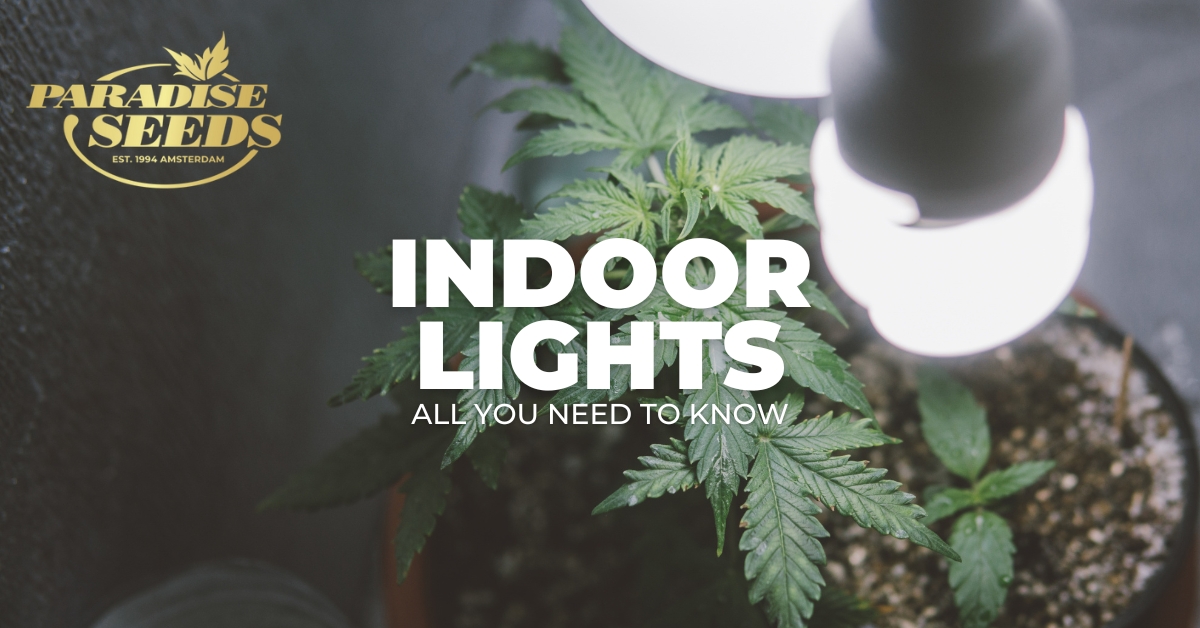
Promoting good ventilation and air circulation
Proper airflow is crucial for plant health, temperature regulation, and preventing mold and mildew.
- Exhaust Fan: An inline exhaust fan pulls hot, stale air out of your grow space. Size the fan according to the volume of your grow space.
- Carbon Filter: Connects to the exhaust fan and neutralizes odors, a vital component for discreet growing.
- Intake Fan (Optional, Passive is common): Brings fresh air into the grow space. For smaller tents, passive intake (via vents) is often sufficient.
- Circulation Fans: Small oscillating fans inside the grow space help move air around your plants, strengthening stems, preventing hot spots, and reducing humidity around the flowers.
What is the best growing medium to use?
The medium is where your plants’ roots will establish and absorb nutrients.
- Soil: The most common and forgiving medium for beginners and a good recommendation for indoor cannabis growing. Use a high-quality, well-draining potting mix specifically designed for cannabis or a light, aerated soil mix. Aim for a pH between 6.0-7.0.
- Coco Coir: A soilless medium derived from coconut husks, coco coir offers excellent aeration and drainage. It’s often mixed with perlite for even better results. It requires a specific nutrient regimen.
- Hydroponics: Growing plants in nutrient-rich water without soil. This method can lead to faster growth and larger yields but is more complex and not recommended for absolute beginners.
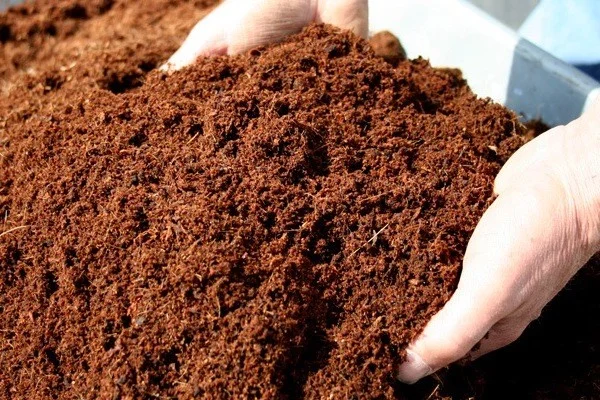
What is the best pot or container to use?
The type and size of your containers will impact root development and plant size.
- Fabric Pots (Smart Pots, Grow Bags): These are highly recommended as they allow for “air pruning” of roots, preventing root circling and promoting healthier root systems. They also offer excellent drainage.
- Plastic Pots: Less expensive but can lead to root circling if not properly managed. Ensure they have some drainage holes.
Monitoring the environment in an indoor cannabis grow
Optimizing climate settings in order to create the ideal indoor cannabis growing environment for your plants – – from cannabis seeds to the flowering stage – is essential. Aspiring for ideal climate settings will promote good management and prevent issues arising in the grow space.
- Thermometer/Hygrometer: These are essential instruments for monitoring temperature and humidity levels in your grow room.
- pH Meter: These will enable you to measure the pH of your water and nutrient solution. This is critical as cannabis plants can only absorb nutrients within a specific pH range (typically 5.8-6.8 for soil, 5.5-6.5 for hydro/coco).
- TDS/EC Meter: This is not essential, but is a useful bit of kit as it measures the total dissolved solids or electrical conductivity of your nutrient solution, indicating the concentration of nutrients.
To delve into more detail on the topic of what makes for a successful set up to nurture, manage and optimize your indoor grow space refer to our dedicated cannabis growing equipment guide.
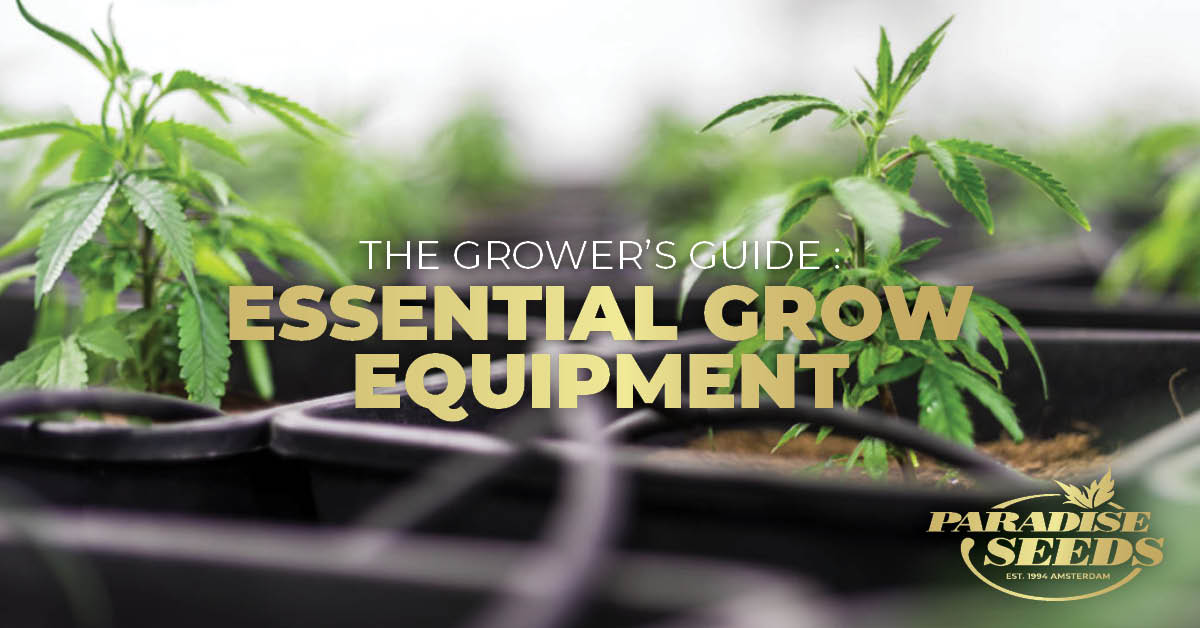
Other useful tools and accessories
- Pruning Shears/Scissors: For pruning, trimming, and harvesting. Keep them clean and sharp.
- Gloves: To maintain hygiene and protect your hands.
- Spray Bottle: For misting young plants or applying foliar sprays.
- Measuring Cups/Syringes: For accurate nutrient dosing.
- Small Fan: For air circulation within the grow tent/room.
- Timer: For automating light cycles.
The importance of nutrients for indoor cannabis plants
Cannabis plants require specific nutrients at different stages of their life cycle and getting the right schedule is crucial for indoor cannabis growing because, unlike with outdoor cannabis growing, the plants are reliant on the environment you are creating for them in an indoor cannabis growing environment.
- During the germination and seedling stage, nutrients should not be used.
- “Grow” Nutrients: Higher in nitrogen, used during the vegetative stage to promote vegetative growth.
- “Bloom” Nutrients: Higher in phosphorus and potassium, used during the flowering stage to encourage bud development/generative growth
- Cal-Mag (Calcium and Magnesium): Often needed as a supplement, especially when using LED lights or certain growing media.
- pH Up/Down Solutions: To adjust the pH of your water and nutrient solution.
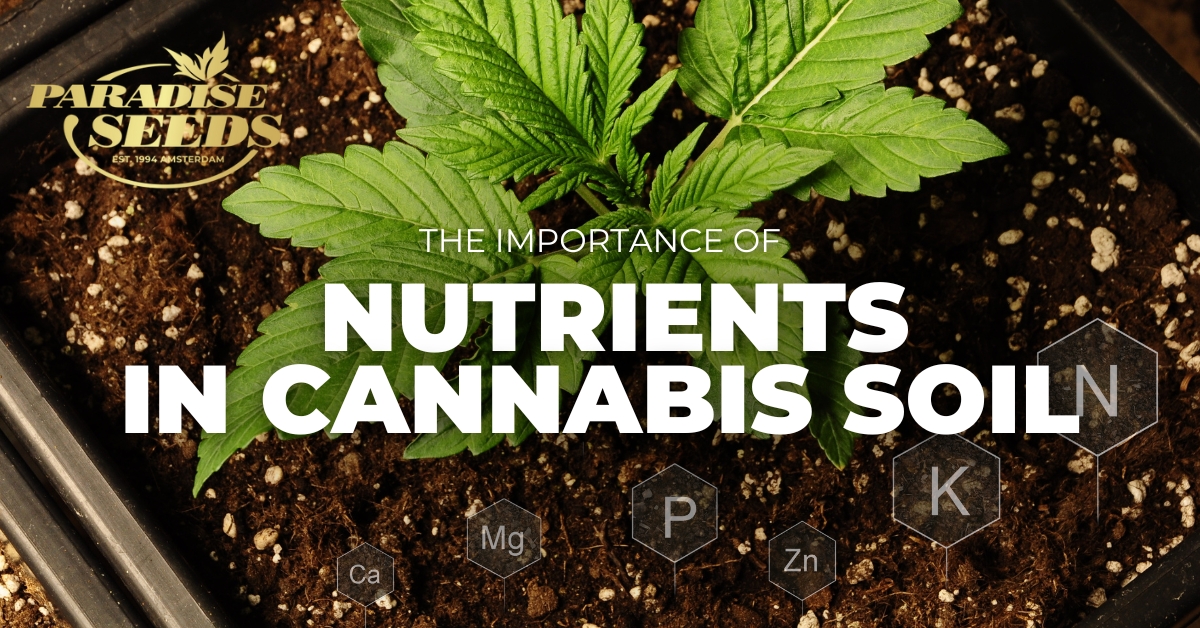
Plant Training Techniques used in indoor cannabis grow spaces
Cannabis plants are very adaptable, especially during the vegetative stage of their life and are incredibly receptive to training techniques. This involves the manipulation of a plants structure and shape.
Training is useful for management purposes in indoor cannabis growing spaces, in relation to working within your particular grow space, and can also contribute to increasing yields by maximizing factors such as light exposure and air circulation (preventing mold developing).
Key training techniques (each offering different benefits) are explored in more depth in links to specialist articles, which give pros and cons and directions on how to proceed. Common training techniques include:
- Topping/Fmming
- Low Stress Training / High Stress Training (LST/HST)
- SOG and SCROG
- Lollipopping/Defoliation
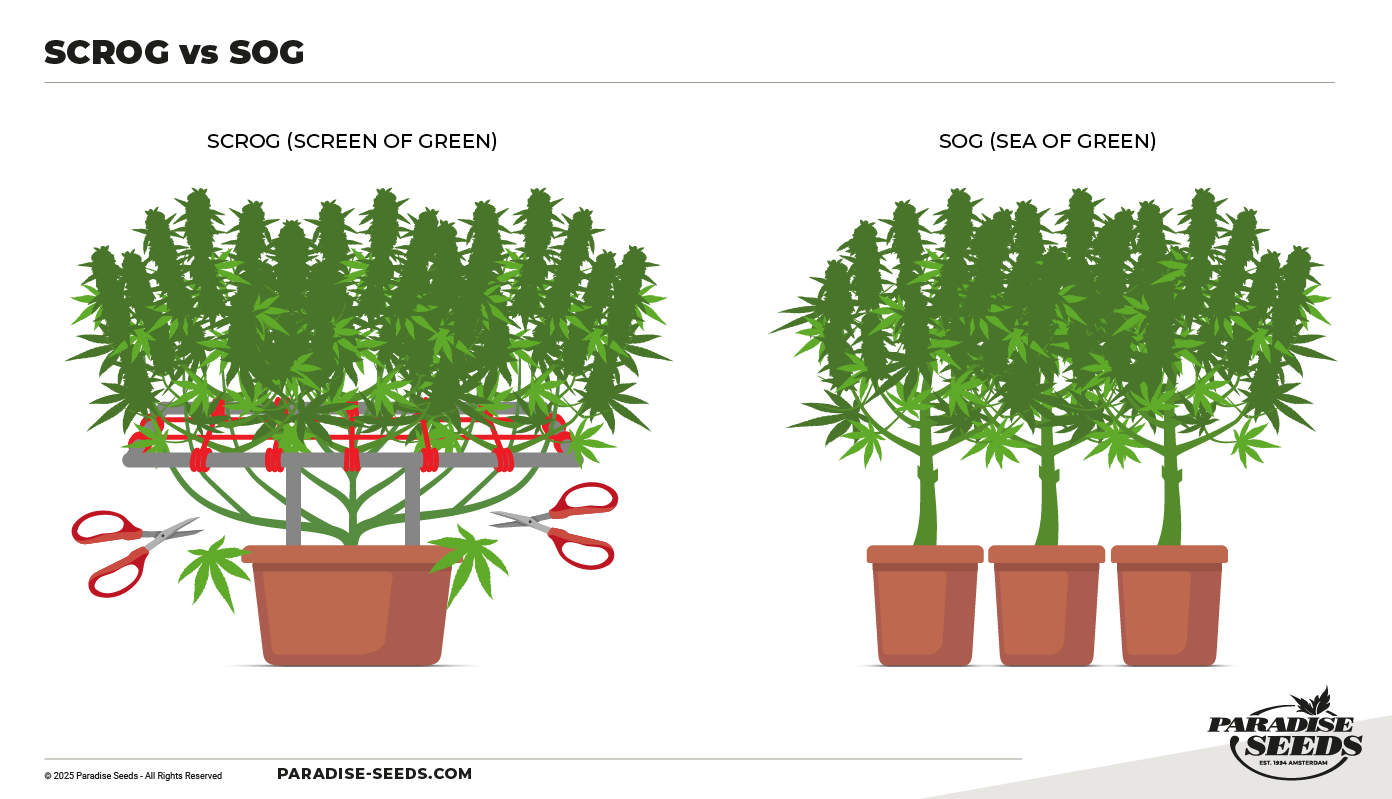
Troubleshooting Common Issues in an indoor cannabis grow
Even with the best planning, issues can arise with indoor cannabis growing. Here are some common problems and their solutions:
- Nutrient Deficiencies/Excesses: Signs such as leaf discoloration or stunted growth indicate a potential nutrient issue. Read this article on how to diagnose and adjust the feeding regime to deal with nutrient issues.
- Pests: Regular inspection is key. For indoor grows, prevention is easier. Use sticky traps, introduce beneficial insects (e.g., ladybugs), or apply organic pest control solutions like neem oil.
- Mold/Bud Rot: Caused by high humidity and poor air circulation, especially during flowering. Ensure adequate ventilation and maintain optimal humidity levels. Remove affected parts immediately to prevent spread. Read more about identifying and dealing with cannabis pests and mold.
- Heat Stress: Curling leaves, burnt tips, or stunted growth or the development of hermies (hermaphrodites) in your grow room. Improve ventilation, increase distance between lights and plants, or lower the room temperature.
- Light Burn: Yellowing or bleaching of upper leaves near the light source is a sign that your lights are too close and need to be raised.
Conclusion
Indoor cannabis growing, while requiring attention to detail and an initial learning curve, is a deeply rewarding experience for the home grower. By understanding the plant’s needs, investing in the right equipment, and diligently managing your grow environment, you can consistently produce high-quality cannabis.


